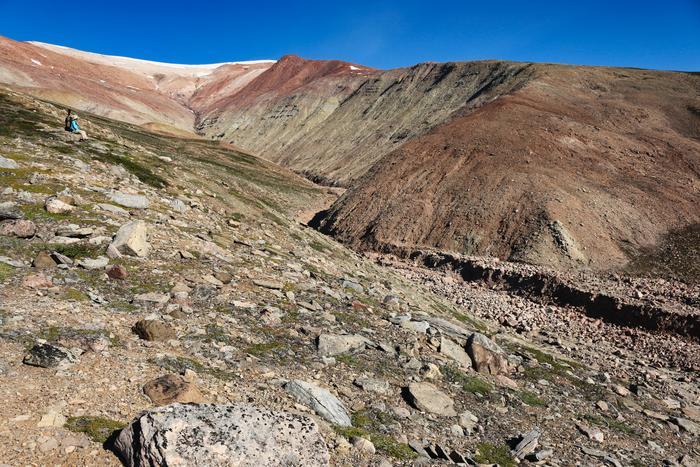Diverse and full of sea life, the Earth’s Devonian era — taking place more than 370 million years ago — saw the emergence of the first seed-bearing plants, which spread as large forests across the continents of Gondwana and Laurussia.

Credit: Photo by John Marshall, University of Southampton
Diverse and full of sea life, the Earth’s Devonian era — taking place more than 370 million years ago — saw the emergence of the first seed-bearing plants, which spread as large forests across the continents of Gondwana and Laurussia.
However, a mass extinction event near the end of this era has long been the subject of debate. Some scientists argue the Late Devonian mass extinction was caused by large-scale volcanic eruptions, causing global cooling. Others argue a mass deoxygenation event caused by the expansion of land plants was to blame.
A recently published study in the journal Communications Earth and Environment led by researchers at IUPUI now posits that both factors played a role — and draws attention to the environmental tipping points the planet faces today.
Filippelli and Gilhooly said the study’s conclusion gives researchers a lot to consider. During the Devonian era, new biological outcomes on land produced negative effects for life in the ocean. In the present day, Gilhooly noted, activity like fertilizer runoff emptying into the ocean, combined with heating from fossil fuel combustion, are reducing oceans’ oxygen levels. The previous outcome of this similar scenario in the Late Devonian had catastrophic outcomes, he said.
“Throughout Earth’s history, there have been a series of biological innovations and geological events that have completely reshaped biological diversity and environmental conditions in the ocean and on land,” Gilhooly said. “In the Devonian era, a new biological strategy on land produced a negative impact for life in the ocean. This is a sobering observation when put in the context of modern global and climatic change driven by human activities. We have a lot to learn from Earth history that can help us think of strategies and actions to avoid future tipping points.”
Other contributors to the study were Kazumi Ozaki of the Tokyo Institute of Technology, Christopher Reinhard of the Georgia Institute of Technology, John Marshall of the University of Southampton and Jessica Whiteside of San Diego State University.
The study is co-authored by School of Science at IUPUI faculty Gabriel Filippelli and William Gilhooly III. The lead author is Matthew Smart, an assistant professor of oceanography at the U.S. Naval Academy who was a graduate student in Filippelli’s lab at the time of the study.
The work is the first to unify two competing Late Devonian extinction theories into a comprehensive cause-and-effect scenario. Essentially, the group concluded that both events — mass volcanism and deoxygenation caused by land plants flushing excess nutrients into oceans — needed to occur for the mass extinction to take place.
“The key to resolving this puzzle was identifying and integrating the timing and magnitude of the geochemical signals we determined using a sophisticated global model,” Filippelli said. “This modeling effort revealed that the magnitude of nutrient events we were seeing based on the geochemical records could drive substantial marine extinction events, but the duration of the events required both factors — tree root evolution and volcanism — to sustain the marine conditions that were toxic to organisms.”
With experts in sedimentology, paleontology, geochemistry, biogeochemistry and mathematical modeling, the group literally dug deep to geochemically analyze hundreds of samples scattered across different continents. These include samples from Ymer Island in eastern Greenland, home of some of the oldest rock samples on the planet.
“The process was highly interdisciplinary,” Gilhooly said. “This combined expertise created a rigorous approach to collecting the samples, correlating sequences in time, acquiring the chemical data and using geochemical models to test working hypotheses about the relative influences of biotically — plants — and chemically — volcanoes — driven triggers of mass extinction. Our analyses demonstrate that the influences are much more mixed than an either-or scenario.”
Journal
Communications Earth & Environment
DOI
10.1038/s43247-023-01087-8
Method of Research
Computational simulation/modeling
Subject of Research
Not applicable
Article Title
The expansion of land plants during the Late Devonian contributed to the marine mass extinction
Article Publication Date
29-Nov-2023
COI Statement
The authors declare no competing interests.





